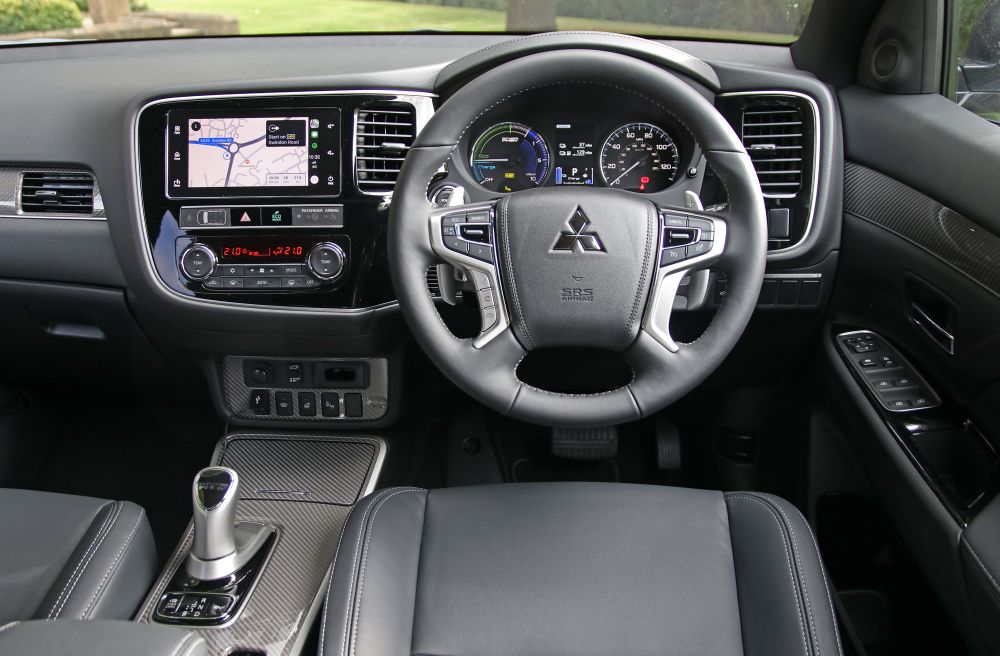Practicality and Boot Space
One of the reasons for the Outlander’s popularity is that it is a perfectly practical family SUV which involves very few compromises and yet can save drivers a fortune in fuel and tax. It’s a full five-seater with plenty of space, although headroom could feel a little tight for really tall occupants in the front or back. There’s plenty of stowage spaces for phones, drinks, bottles and anything else you need to get you through a journey.
The boot isn’t class-leading in size but is still big enough to swallow a family’s holiday luggage. The only real drawback is the lack of a seven-seat option; this is available with the petrol-powered Outlander but the PHEV has an electric motor under the boot floor taking up the space.
If you carry loads rather than people, then there is even an option to have a van version of the Outlander PHEV. It’s quite likely that your home charge point installer will arrive in one!
It might be getting old now, but Mitsubishi has constantly updated the Outlander’s tech and safety gadgets to make sure it keeps up with rivals.
Technology
The Mitsubishi brand name appears on all sort of technology, from TVs to lifts, so it’s not a surprise to see that the list of gadgets on the posher versions of the Outlander is pretty long. All except the cheapest Verve model have a smartphone app to control the charging and pre-set the heating remotely and Apple CarPlay and Android Auto built into the infotainment system.
Oddly though, the PHEV relies on this connectivity entirely and doesn’t have a built in sat-nav. Mitsubishi assumes that the apps built into our phones will provide a more up-to-date, upgradeable and faster package than it ever could, so has saved the cost and weight of a built-in unit. In reality it makes sense and works well, allowing you to choose between navigation apps and use streaming services like Spotify really easily. But if you don’t have a smartphone, you’ll be getting lost.
Safety
Although it’s been updated substantially, the basic bits of the Outlander have been around since 2012. That’s the last time it was tested by the independent safety checkers at EuroNCAP, when they gave it a full five-star rating. It’s not really fair to compare that score with more modern rivals though, as they’ll have been put through more strict tests since and the judging criteria has evolved.
However, if we look across the Atlantic to the US, the safety organisations there did crash test an Outlander in 2018 and rated it ‘Good’ in all categories.
Certainly Mitsubishi has been keen to keep the crash prevention tech up to date on the car, and if you opt for one of the ‘Safety’ packs then you’ll get lane departure warning, automatic braking and a few other sensors too. Tiny cameras all around the car allow you keep an eye on the front, rear and sides of your car by creating a bird's-eye view to help you park more safely. It’s a shame they’re not standard though – to get the full package of safety kit you need to choose the Dynamic Safety model, which tips over the £40,000 price barrier and means you’ll be paying more in road tax.






















